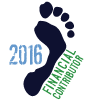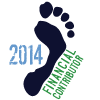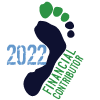I'm an okay runner in terms of endurance, however my pace has plateaued. I don't generally worry that much about pace. However, it would be more fun to go faster, and running is all about maximizing fun for me.
As for me, I think that I'm going to continue working on the exercises listed in the book. I'll also do some strength training focusing on the glutes. And I'll keep up the circuit strength training and swimming practice. Once I feel proficient with the exercises, I'll head back out on the trail and see how it goes.
Thanks, I'll try to look through the book soon, focusing on the sections you recommended. But right now I'm really gung ho in my own work, and am trying to read about two books a day. The ideas are really coming to me these days. It's great to be re-inspired after a period of 6-9 months of feeling flat.
I agree that it's funner to run (relatively) fast. For improving pace, I think the best thing to do, as you've heard me say already, is to work in tempo runs and intervals/fartleks/hill sprints. Almost everyone seems to agree on this. Here's an interesting article, one of dozens, confirming that point:
http://www.runnersworld.com/race-training/canova-101?page=single
Here's the gist of it:
"A Kenyan runner's mentality is to run at the right speed," says Canova's assistant in Iten, Kenya. "The Western runner's mentality is to run the right distance."
So, for example, on your 9 mi trail run, perhaps break it into three sections of three miles or so, and try to cut down the pace by 30 seconds or a minute per mile, and take some kind of break--walking, jogging, or stretching--after each section.
For running-specific strength-training, I think you've hit the nail on the head: almost everyone says that the glutes are the most common area of weakness. Deadlifts and squats are two of the best ways to fix this problem, along with hip abduction and adduction exercises. Although, that said, if you aren't having any problems with your knees or ITB, your glutes are probably just fine. Hmmn, that didn't come out right.
For core stability, a lot of people will tell you that if you're lifting heavy weights, you're already developing core stability quite a bit. I tried some plank exercises, and found them pretty useless compared to the benefit I get from lifts and rows and presses. You simply can't lift a bunch of weight over your head, as with the military press, for example, without a stable core. That said, I do have a wobble board arriving today that I'm going to play around with. Maybe try doing some light dumbbell exercises at the end of my workout while trying to maintain balance on it. Still, I still think real sports or martial arts are the best way to develop balance and agility.
A lot of stuff on these lists of my routines, especially on the first--mobility--works the glutes as well:
MOBILITY
Abduction, Flex & Ext with ankle weights
Leg swing with ankle weights
Reverse Leg Lift with ankle weights
Lateral Leg Raises with ankle weights
Climber with ankle weights
Spiderman with ankle weights
Dirty Dog with ankle weights
Donkey Kick with ankle weights
Donkey Whip with ankle weights
Iron Cross with ankle weights
Knee Tuck with ankle weights
Bridge
Brazilian Crunches
Pilates Hundred
Pilates 'The Rolling Ball'
Pilates 'The Saw' c/bar
Superman
STRETCHES
High Leg stretch
ITB stretch
Standing Quad Stretch
Splits stretch
Spread Eagle stretch
Kneeling & Foot stretches
Pike
Lunge with side stretch
Lunge with quad stretch
Bow
Pigeon forward fold
STABILITY BALL
Ab tuck
Side-lying leg lifts
Hamstring roll
Side crunch
And I think my running benefits most from alternating it with weight days, it keeps me fresh and I think the constant switching between anaerobic and aerobic is a good stimulus for adaptation. But I'm also digging my micro-runs on my st days. I think your cross-training with swimming is also an excellent way to go.
Anyway, look forward to hearing how this all goes for you, as always. We're of similar mind sets and sensibilities, so I can learn a lot from your experimentation.






























